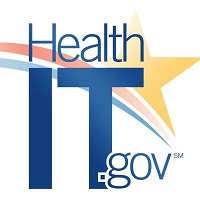 By Patricia Flatley Brennan, RN, PhD, FAAN, Susan Gregurick, PhD, Teresa Zayas Cabán and Steven Posnack, ONC
By Patricia Flatley Brennan, RN, PhD, FAAN, Susan Gregurick, PhD, Teresa Zayas Cabán and Steven Posnack, ONC
Twitter: @ONC_HealthIT
Steven’s Twitter: @HealthIT_Policy
Opportunity knocks for NIH researchers, who will be able to leverage clinical data from electronic health record (EHR) systems with increased frequency and consistency. The passage of the 21st Century Cures Act (Cures Act) has charted a path toward increasing access to and interoperability of electronic health information for clinical care. This, in turn, has paved the way to leverage relevant policies, systems, and infrastructure to accelerate research. In parallel, researchers have been challenged to make data from a single research study, once collected, useful for other research endeavors. Data sharing is essential for expedited translation of research resources into human health improvements. Specifically, sharing scientific data and results enables researchers to more vigorously test the validity of research findings, strengthen analyses by combining data sets, and explore new frontiers.
The implementation of the Cures Act has laid the groundwork for increased use of health care data standards that can benefit research. In particular, the Office of the National Coordinator for Health Information Technology (ONC) recently published a final rule, which went into effect on June 30, 2020, and requires electronic health record (EHR) systems to provide the clinical data necessary for nationwide, interoperable health information exchange through the adoption of the U.S. Core Data for Interoperability (USCDI) standard.
The USCDI establishes a standardized set of data classes and component data elements and expands on data long required to be supported by certified EHRs. The USCDI incorporates health data standards developed and supported by the National Library of Medicine (NLM) (e.g., RxNorm, SNOMED CT, LOINC). ONC is establishing a transparent and collaborative annual process for stakeholders to comment on the USCDI’s expansion; a new version of the USCDI would be anticipated for release each summer starting in 2021.
The NIH published a notice encouraging NIH-supported clinical programs and researchers to adopt and use the standardized set of healthcare data classes, data elements, and associated vocabulary standards in the USCDI v1 to enable greater interoperable exchange of health information for clinical care and research. USCDI adoption will allow care delivery and research organizations to use the same coding systems for key data elements that are part of the USCDI data classes. USCDI will benefit NIH researchers through increased availability of consistently standardized clinical data for research and will make it easier to aggregate research data sets and enable greater discovery.
These efforts will complement use of the HL7® Fast Healthcare Interoperability Resources® (FHIR®) standard, which NIH encouraged researchers to use in a Guide Notice issued a year ago to facilitate researcher access to clinical data in EHRs and to facilitate the sharing of research data. They also advance goals of the NIH Strategic Plan for Data Science and NLM’s new strategic plan to generate and leverage vast amounts of data and to ensure those data are findable, accessible, interoperable, and reusable – or aligned with the FAIR principles.
Data standards are key to the interoperability and reusability of data, allowing data to be more easily analyzed, shared, and combined with other data. Use of data standards in research will help NIH to achieve its data science and open science goals.
Working together and using our authorities to the fullest, NIH and ONC are poised to contribute to the development of interoperable research data to enable discoveries and improve health.
This post was originally published on the Health IT Buzz and is syndicated here with permission.
